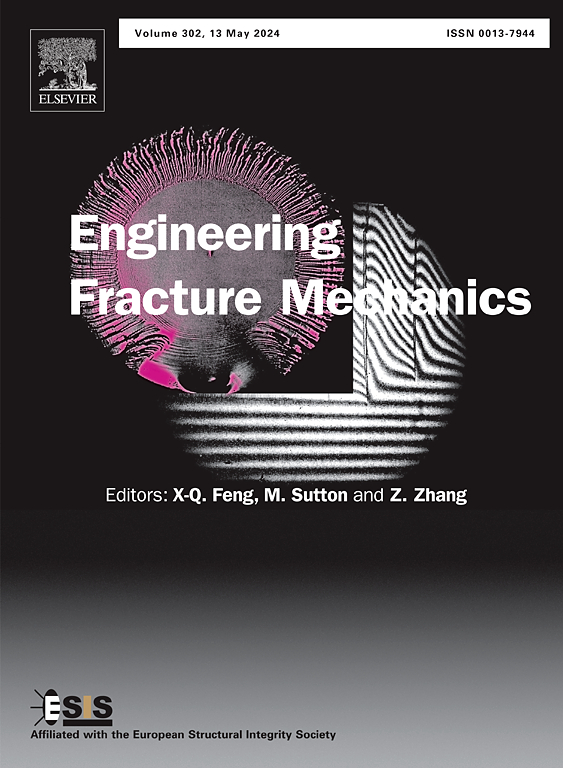Data-driven nonlocal damage mechanics and fracture of shells
IF 4.7
2区 工程技术
Q1 MECHANICS
引用次数: 0
Abstract
This paper proposes a data-driven modeling approach to address the problem of fracture in plates and shells, based on damage mechanics. The fracture problem today faces difficulties in simulating the non-local effects associated with microstructural features of comparable scale to plate thickness, setting corresponding criteria for crack initiation and propagation, and describing the subsequent evolution of damage. The inter-dependence of these three factors can result in very complicated modeling needs. To overcome these difficulties, a data-driven generalized yield function is herein proposed, which can account for the stress state, hardening parameters, and a local second-order gradient of plastic strain and damage. Specifically, prior material knowledge is harnessed to identify key features from its mechanical data to define a generalized yield surface. Next, by training neural networks, a quantitative description of the yielding surface is generated so that complex material behaviors can be described. The yield function learned through this data-driven approach is subsequently implemented into a finite element framework. The implementation is finally utilized to analyze size-dependent fracture of plates and shells. The reliability of the proposed method is validated through the several representative cases, demonstrating its potential to describe complex fracture patterns in plates and shells. Limitations of the proposed approach are also discussed.
求助全文
约1分钟内获得全文
求助全文
来源期刊
CiteScore
8.70
自引率
13.00%
发文量
606
审稿时长
74 days
期刊介绍:
EFM covers a broad range of topics in fracture mechanics to be of interest and use to both researchers and practitioners. Contributions are welcome which address the fracture behavior of conventional engineering material systems as well as newly emerging material systems. Contributions on developments in the areas of mechanics and materials science strongly related to fracture mechanics are also welcome. Papers on fatigue are welcome if they treat the fatigue process using the methods of fracture mechanics.

 求助内容:
求助内容: 应助结果提醒方式:
应助结果提醒方式:


